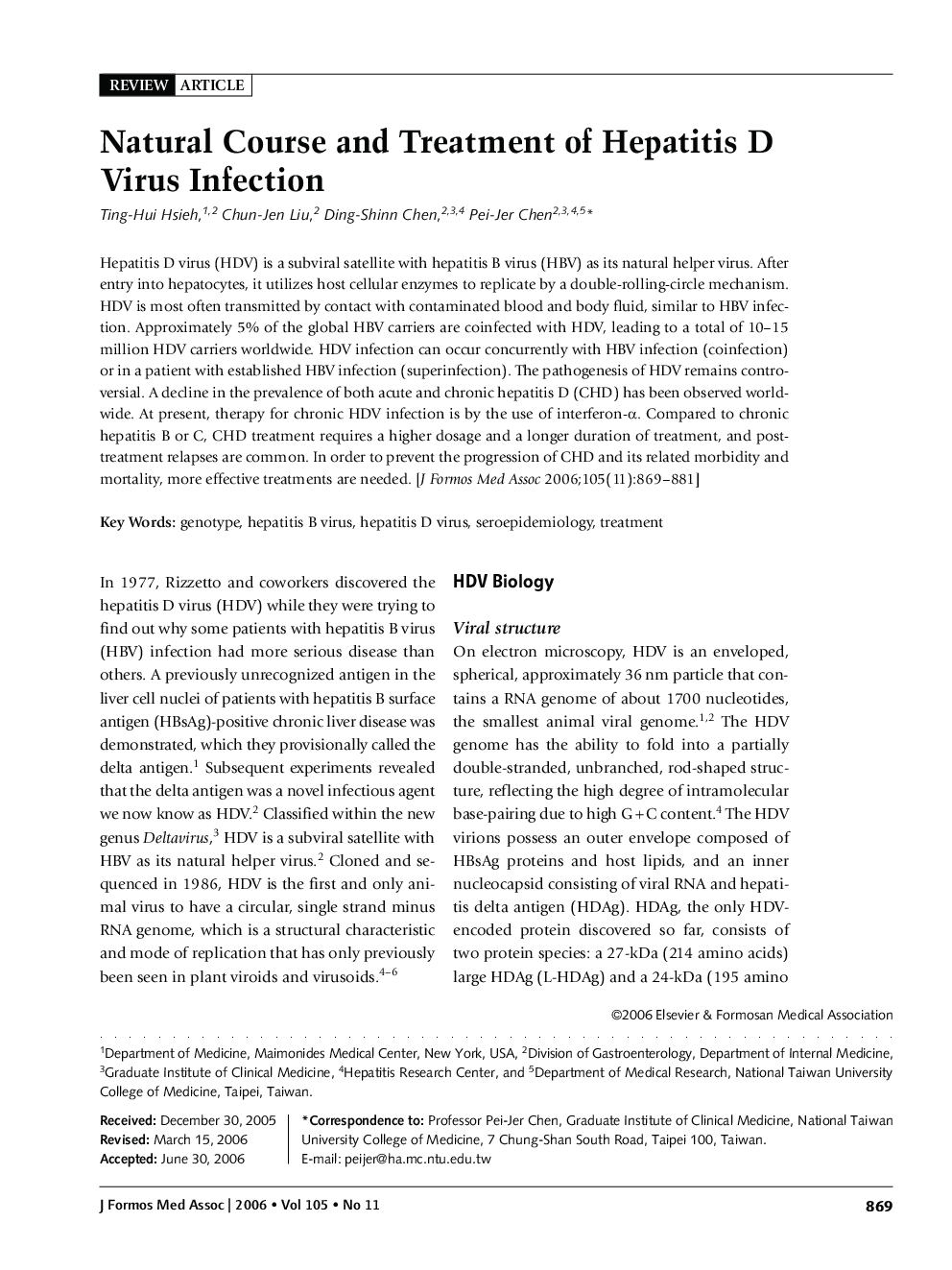| Article ID | Journal | Published Year | Pages | File Type |
|---|---|---|---|---|
| 3480173 | Journal of the Formosan Medical Association | 2006 | 13 Pages |
Hepatitis D virus (HDV) is a subviral satellite with hepatitis B virus (HBV) as its natural helper virus. After entry into hepatocytes, it utilizes host cellular enzymes to replicate by a double-rolling-circle mechanism. HDV is most often transmitted by contact with contaminated blood and body fluid, similar to HBV infection. Approximately 5% of the global HBV carriers are coinfected with HDV, leading to a total of 10-15 million HDV carriers worldwide. HDV infection can occur concurrently with HBV infection (coinfection) or in a patient with established HBV infection (superinfection). The pathogenesis of HDV remains controversial. A decline in the prevalence of both acute and chronic hepatitis D (CHD) has been observed worldwide. At present, therapy for chronic HDV infection is by the use of interferon-a. Compared to chronic hepatitis B or C, CHD treatment requires a higher dosage and a longer duration of treatment, and post-treatment relapses are common. In order to prevent the progression of CHD and its related morbidity and mortality, more effective treatments are needed.
